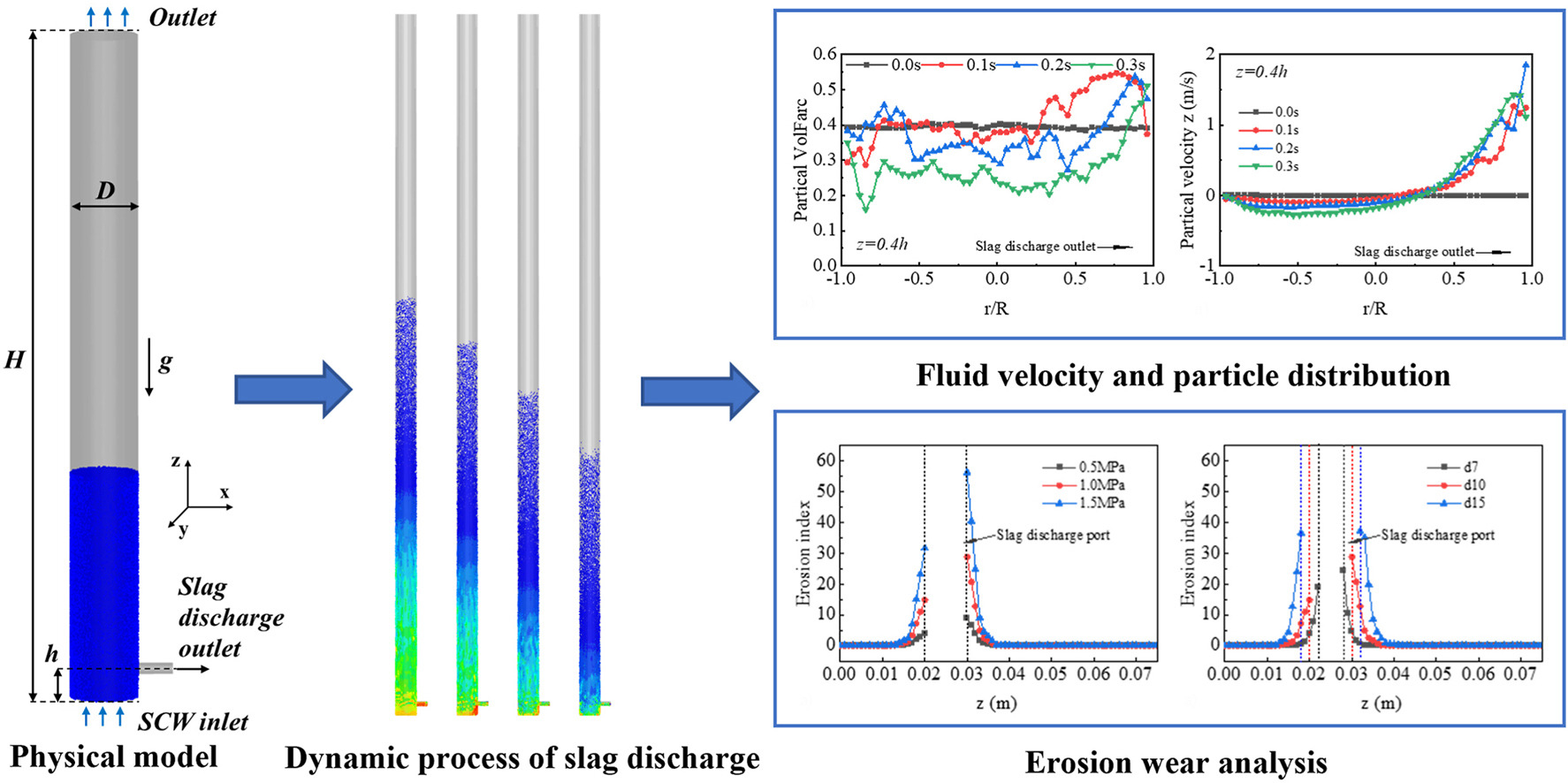• A transient CPFD-based model was created to study slag discharge in a SCWG reactor.
• The hydrodynamic flow characteristics of particles were obtained.
• Interaction between particle motion and wall erosion is analyzed.
• The solid hold-up during slag discharge was over 90 %.
The simulation of the slag discharging process in supercritical water (SCW) fluidized beds is challenging due to the complexity of particle transport in a high-temperature and high-pressure environments. To balance computational efficiency with the need for detailed particle-level information, this study proposes a dynamic three-dimensional numerical model based on computational particle fluid dynamics (CPFD) to investigate the slag discharge process in a SCW fluidized bed reactor. This study presents the dynamic evolution of the flow field, velocity field, and particle phase volume fraction distribution during the slag discharge process, revealing the relationship between the uneven particle distribution and the flow field. Large particles are difficult to be discharged from the bottom of the reactor during the slag discharge process. By increasing the discharging time, the problem of dead zone at the bottom of the reactor can be alleviated effectively. Higher particle velocities and more frequent particle impacts cause more severe wear on the wall near the slag discharge outlet. Reducing the slag discharge differential pressure helps to reduce the wear of the connection. Throughout the entire slag discharge process, the solid holdup remains above 90 %, demonstrating the efficiency and rapidity of the slag discharge system. This work aims to provide valuable insights for the design and optimization of slag discharge systems.

